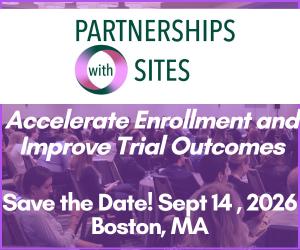How Rush University Ensures Its Research Reflects Its Community
Rush University has spent years honing its approach to community engagement. Raj C Shah, MD, Assistant Vice-Provost of Clinical Research shares how that consistent effort has resulted in a robust approach to community engagement and how it is creating authentic, trusting connections to bring research into people’s homes and communities.

What is the Rush Alzheimer’s Disease Center engagement approach and how was it developed?
It’s called NGAGE: Network; Give First; Advocate for Research; Give Back; Evaluate. In my initial years as the Leader of the Outreach, Research, and Education Core of the NIA-funded Rush Alzheimer’s Disease Center Clinical Core Center, I observed how our diverse staff members were building long-term relationships each day in an older African American community and an older Latino community to support our research studies. That work by our dedicated outreach team members became the NGAGE model.
How does NGAGE turn into Rush’s on-the-ground work?
We learned that the first activity has to be networking. How do you form relationships with key individuals who really understand their community? The first G was “give first.” Before you even talk about any of your needs as an institution, you work with the community and understand where their needs are, where they're starting, and then help them to find support for those efforts. Once we built that relationship, we moved to “A”: Advocate for Research. We had to receive the invitation to be able to talk about what questions we were trying to answer with our research programs and present them, knowing full well that not everybody would take us up on the first encounter.
The second G was “Give back.” When we started to glean insights from the research, we would give that information back to the individual participants and to their communities, so they could learn and they could think about how to incorporate the learnings in their everyday experiences. Finally, the E was “evaluate.” It was not only focused on whether or not we got more people into the study and achieved our outcomes. It was also from the perspective of the community. How did they evaluate our work? What did they think about it?
Why was it so important to go into specific community spaces when advocating research?
First, it changes the power dynamics. If people are coming to me in my office, in a big building in a large institution, it’s an environment where they may not feel as comfortable or confident to express themselves, share their opinions, or ask the right questions. By going out into the settings where people were comfortable, we were able to get to the root of some of the questions that people had during decision-making.
And second, we knew that many community members were struggling to get that information when they were seen in clinical settings, because they were prioritizing being seen for their main healthcare needs. We also knew that our primary care physicians were struggling to keep up with advocating for research. So instead, we went directly to the people that would consider volunteering to be in a research study. Many times, the first response would be “No.” If you take it as an opportunity to keep working with the community, some of those “No’s” will change into “Yes’s” as they keep seeing you in their own environment.
What work have you done to make the discussion around research participation more accessible?
We have worked hard to simplify our templates around research to fit the needs of a diverse, older population. Even before the regulations and Common Rule came out for the consent form to contain a summary on the first page, we were doing that synopsis. We gave the key points – what the condition we were studying was, the purpose of the study, potential risks and benefits, and what alternatives existed. We gave people time to think about it. Some would say “No” or “Not right now.” We’d come back into the community to give another presentation, and garner more opportunities to have a conversation.
That is how to build components of trust, and work your way through the complexities of engagement. Sometimes, that complexity is time. You just have to spend it with people; you have to engage with them; you have to share information so that they can discuss it with their family members, or their community leaders, or physicians.
How do you define trust, and how do you build it with the communities you’re trying to reach?
Trust occurs when people feel the most vulnerable and you're there to help them and to walk through the journey with them. And how to build it? First, you must be there consistently. And second, you must be working on a broader message: that research is the way that we can work to find answers to the questions we’re asking about the diseases that affect health. If you can get potential participants to go to their family members, or their primary care providers, or their community key opinion leaders, and these trusted members of their networks mention hearing about the importance of participating in research, you have a better chance of getting more diverse populations to engage as partners in research.
How do you engage with physicians about presenting research to their patients?
I've always tried to help encourage groups of primary care doctors to set up their own expectations about how they want to interact with researchers and research ideas. In a lot of practices, they’ve developed a simple, one-page form to get answers on “What are the key goals of this research? What would be helpful? Why do you need our involvement?” to help make a decision about whether or not a study is right for them.
That's been helpful to empower the primary care doctors in the decision process of engagement. Usually if you provide information about the study, and have an opportunity to present it to a group, you can get broader buy-in.
What are the chief concerns of physicians when it comes to engaging their patients in conversations around research?
It’s two-fold. First, is the concern around how it will impact the flow of what they are doing day-to-day. They are often happy to talk about research in general, but they need other people to help them after that point, specifically with the hand-off. The second is the concern around “being surprised” with questions about the study from the patients. We always say, “We just need you to tell people about the study, and then we’ll take over.” In reality, that never fully happens, because the PCPs will have to be involved if, for example, an adverse event occurs.
We have lost some of the specialization in our training and our capabilities when it comes to care and research. They have become two very separate things, when they should be intertwined. But I believe that the more we empower primary care doctors to feel engaged in the process, and to see its value, the better off we will be in bringing the two areas, care and research, back together.
How has being involved in the community changed the practices and procedures at Rush?
We are starting to build monitoring capabilities for our portfolio of studies at Rush. Firstly, we monitor our progress in how fast we can get the study up, and how much time it takes to get our first person in, which have been the standards of industry-based clinical studies for a long time. But secondly, we are starting to think about how we are ensuring that we're getting the diverse population that's going to be affected by the results of the studies we do. Some of it has just been trying to figure out the correct dashboarding, and comparisons, to understand what is possible.
What do you mean by ensuring that you’re getting the right population?
We compare across three populations: the populations in the Chicago area; the demographics of who comes to us at Rush for clinical care; and the population that actually participates in research. That allows us to identify where those patterns are not syncing up. We see patients with diverse backgrounds in our center, but if they’re not participating in the trials we have, that may mean we don't have the right trials for the conditions that are important to them. That requires us to make decisions when trials are offered to us. It may be a great study, but it may not be right for Rush based on the conditions that our populations have or care about.
It’s a continual mind shift in the field. We will have investigators who have a special interest in particular areas and are good at it. Their expertise will bring in a certain group. In that case, how do we encourage more diversity in that pool? And then with broader conditions that we see a lot in the clinical setting, how do we make sure that we have the right studies and investigative teams that match?
Can you share an example of how you changed a study to accommodate the patient population at Rush?
During the COVID-19 pandemic, at one point most people coming in for COVID treatment were Spanish-speaking. I remember seeing our infectious disease doctors struggle to engage with them for research, because the consents were written in English. The designers of the study hadn’t completely thought about who would actually be coming in for care. In the haste to get studies up and running nationally, less effort was placed in putting consents in multiple common languages together.
When these studies actually were being offered, our physicians thought, “Wait a minute, how are we doing to do this?” Initially, we just used whatever tools we had to consent, but then we worked with our IRB and our sponsors to say, “We really do need these consents in Spanish, and we need a process to be able to engage people in Spanish.” We must be constantly aware of the community most affected by these conditions, and design our studies upfront to be able to address their needs and make them feel comfortable to participate.







